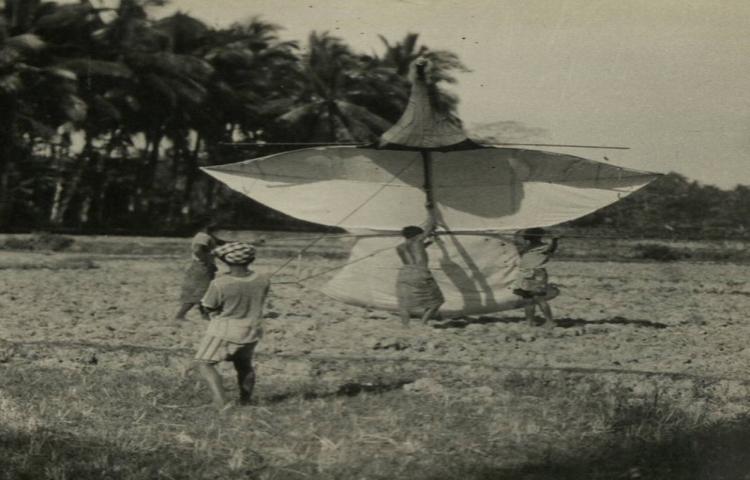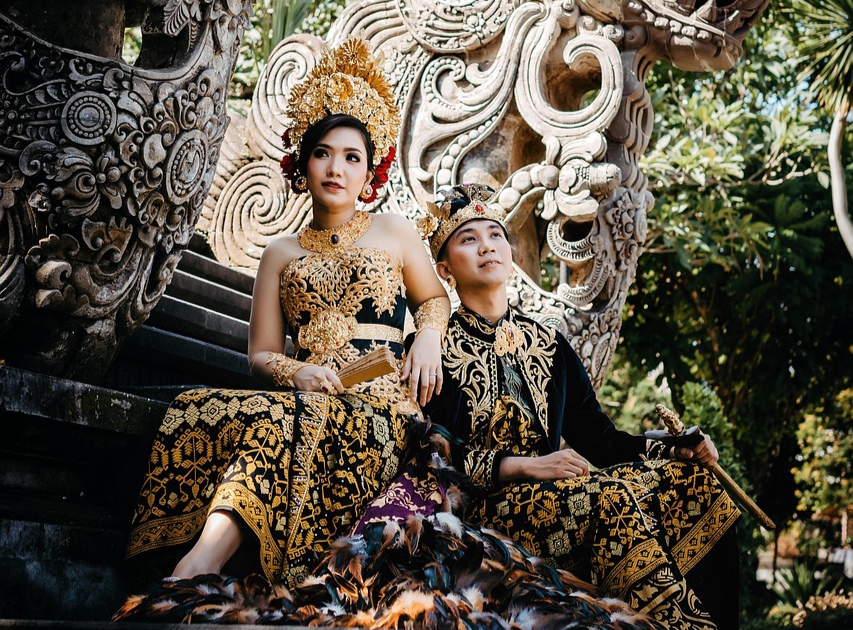The people of Banjar Yangbatu Kangin, Denpasar, Bali, hold a special story about the legendary Janggan kite, a tale that dates back to the early 1900s. This particular kite stood out due to its remarkable size and design.
The body measured approximately four meters wide, while its impressive tail stretched around seventy-five meters in length and five meters in width. The main body (pengawak) was white, the neck (kekondo) was red, and the lower section (jit sesapi) was also red. The long tail featured a striking combination of red, white, and black, with its tip (tanggu) entirely white.
One of the most significant aspects of this Janggan kite was its mask (tapel), which was intricately carved from jepun wood sourced from Pura Dalem Yangbatu. According to legend, a resident of Banjar Yangbatu personally crafted this mask, shaping it into the fierce visage of a lion.
The process of making the mask was unique—it was repeatedly transported between the artisan’s home and Pura Dalem until completion. Once finished, the lion-shaped mask was carefully preserved and later attached to the Janggan kite. While the details of the kite’s construction were never explicitly recorded, it is known that bamboo string (tali tiying) was used to fly it.
One fateful day, a grand kite-flying competition took place in Badung, drawing participants from various banjar (traditional community groups). The event was held in the rice fields between Subak Yangbatu and Subak Gemeh, west of Yangbatu village.
As the competition unfolded, the Janggan kite from Banjar Yangbatu Kangin experienced a dramatic incident—its string suddenly snapped, causing the kite’s head to plummet toward the ground. Spectators feared that both the kite and its elaborate mask would be destroyed upon impact.
However, in a surprising turn of events, just before hitting the ground, the kite’s head miraculously corrected its position and landed smoothly, leaving everyone in awe of what seemed like a supernatural occurrence.
By the end of the competition, the Janggan kite from Banjar Bun secured first place, followed closely by the entry from Banjar Yangbatu Kangin in second place. The third-place winner remains unknown, as the storyteller did not recall the details. As a reward, the champion of the competition received a grand prize—an entire buffalo.
This extraordinary event remains a cherished tale in the community, symbolizing not only the skill and dedication of Banjar Yangbatu Kangin’s kite makers but also the mystical elements often intertwined with Balinese traditions. (BT)





